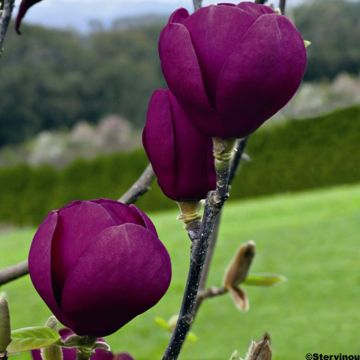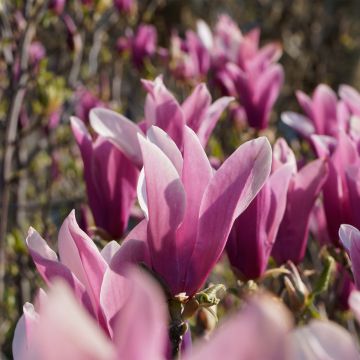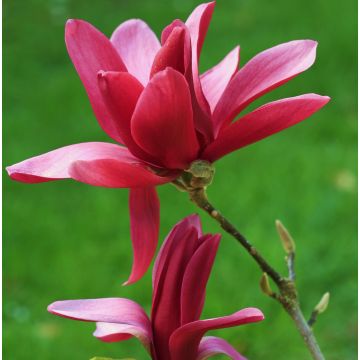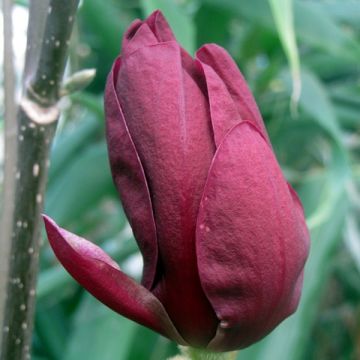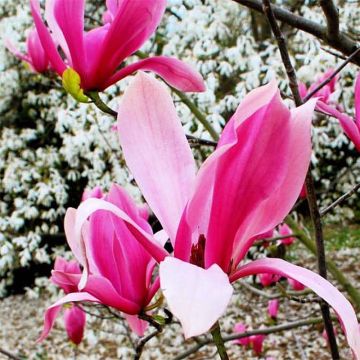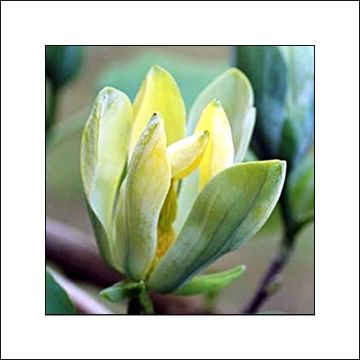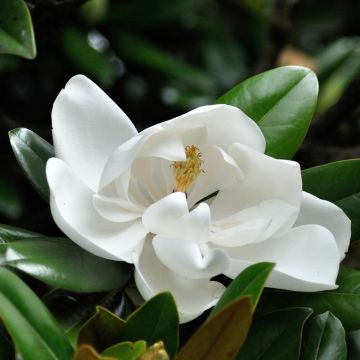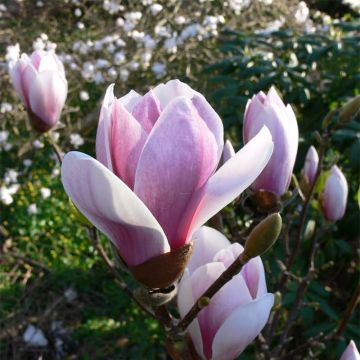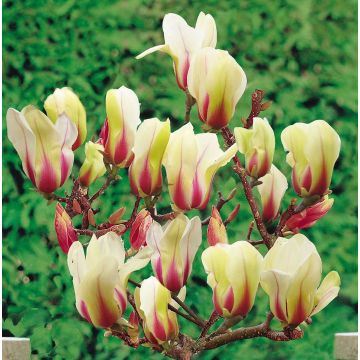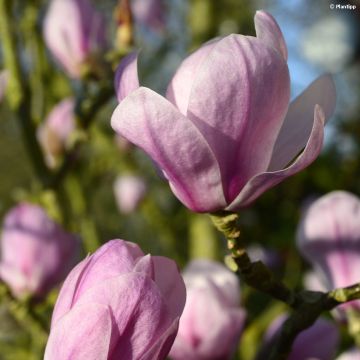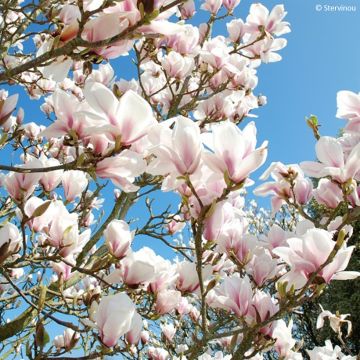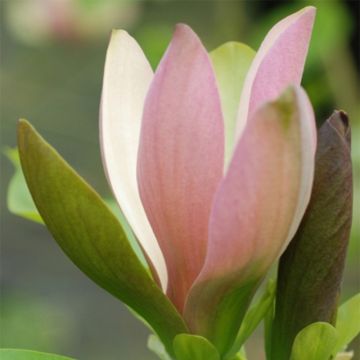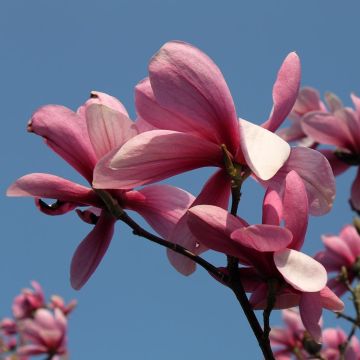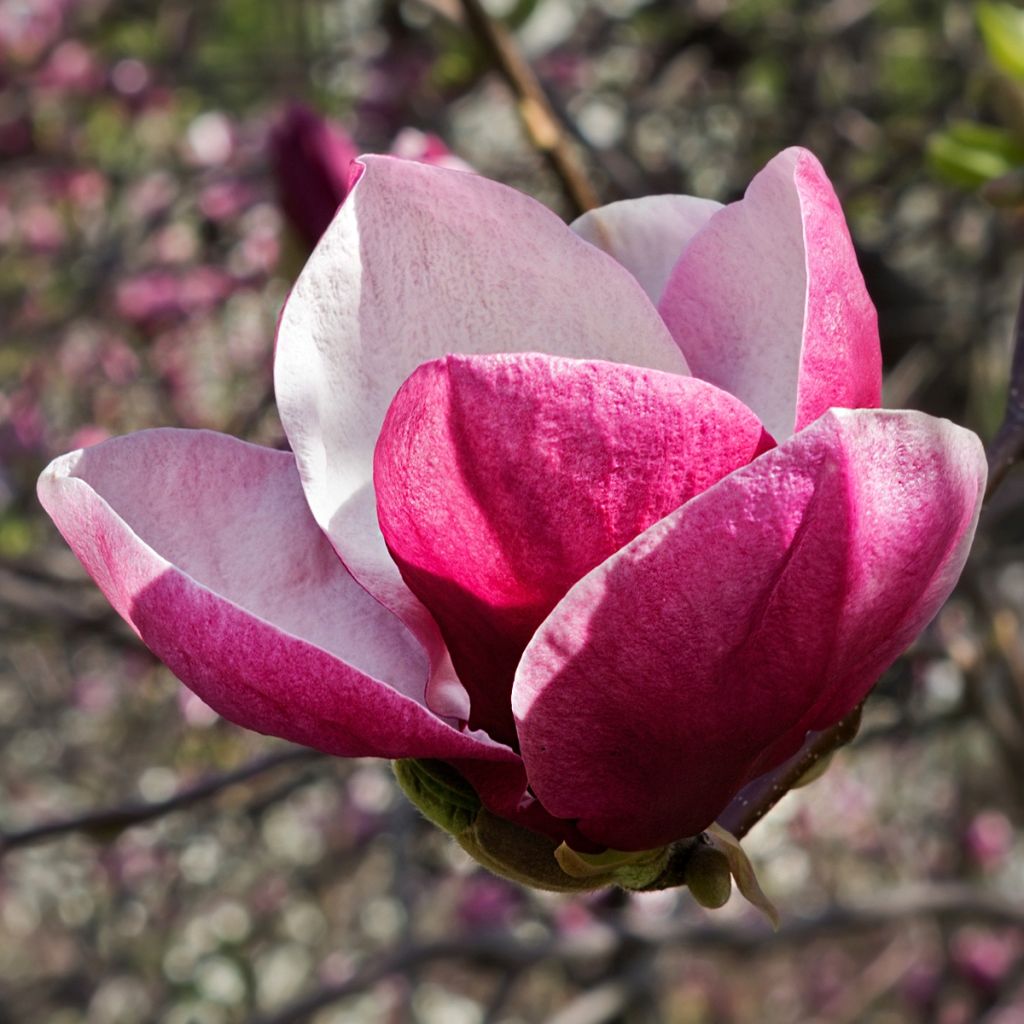

Magnolia March Till Frost
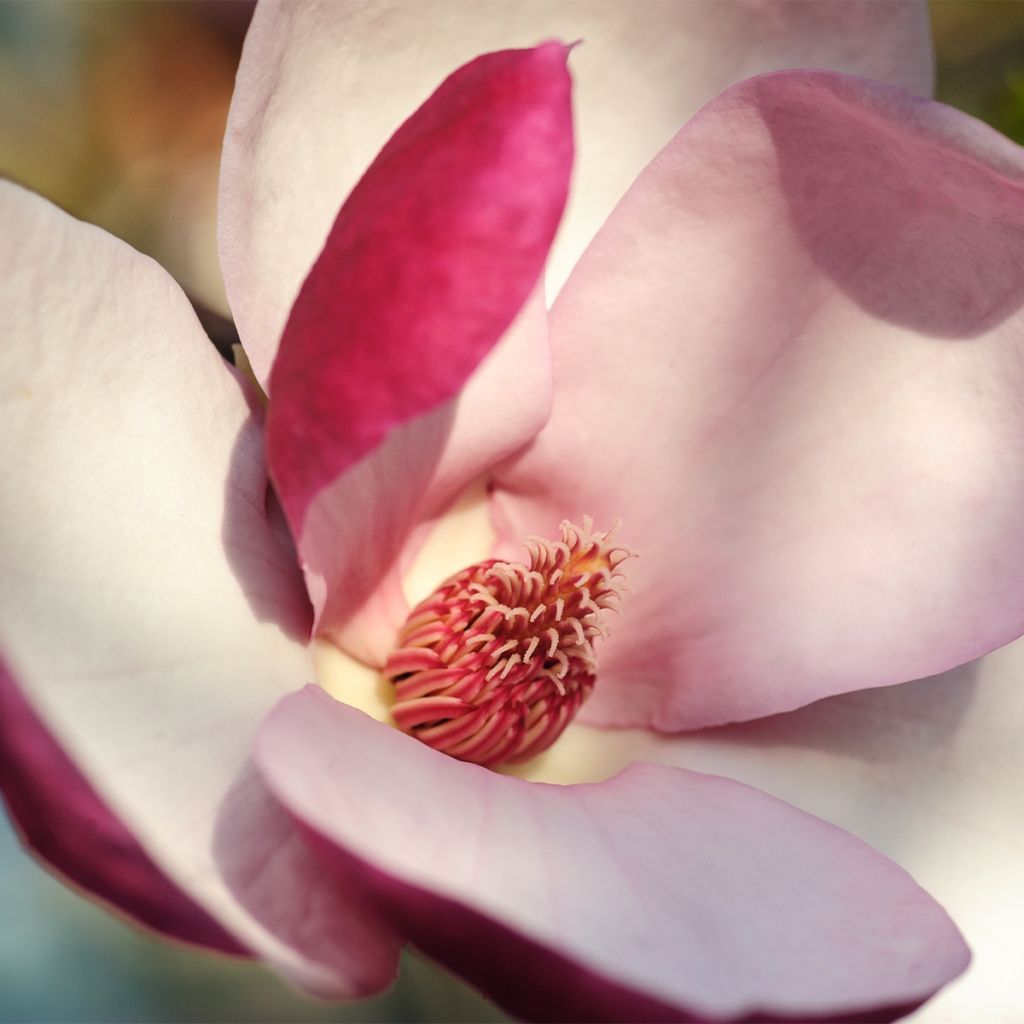

Magnolia March Till Frost
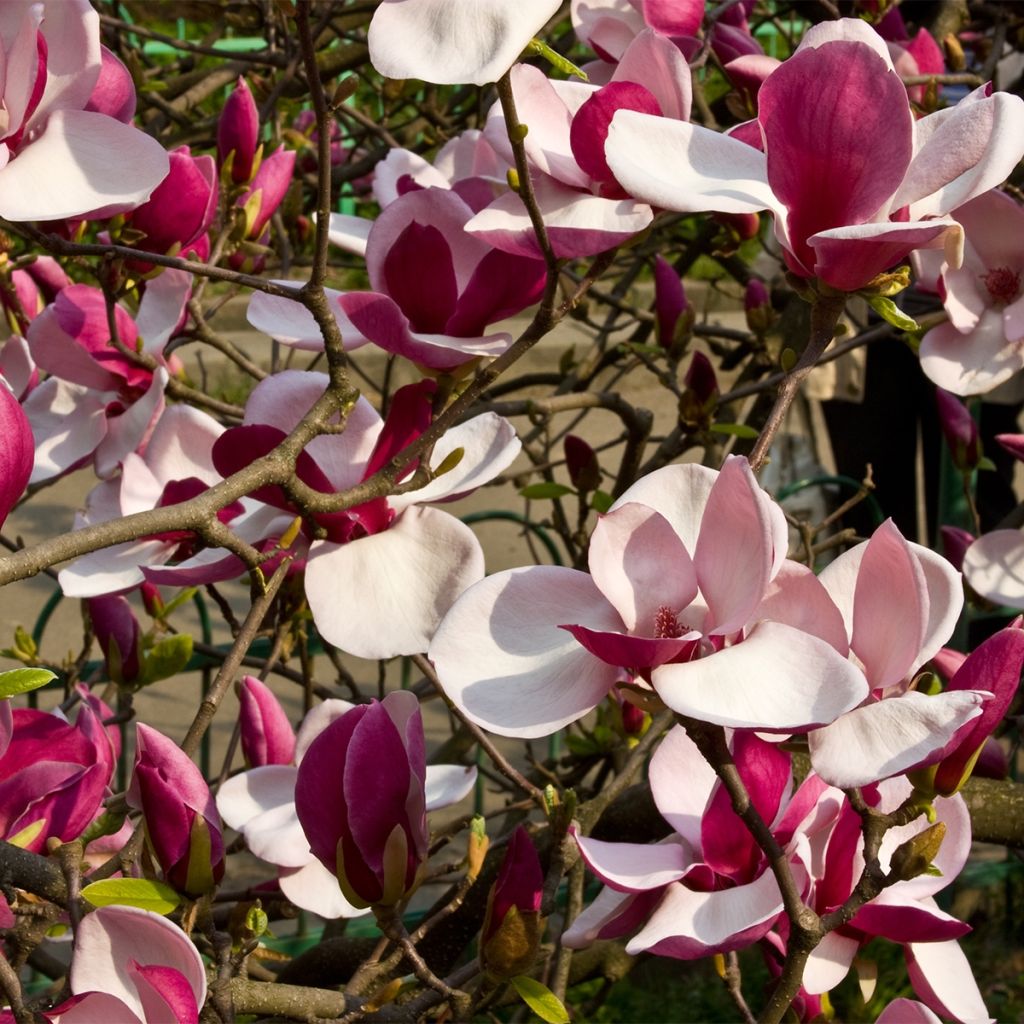

Magnolia March Till Frost
Magnolia March Till Frost
Magnolia March Till Frost
Magnolia
Why not try an alternative variety in stock?
View all →This plant carries a 24 months recovery warranty
More information
We guarantee the quality of our plants for a full growing cycle, and will replace at our expense any plant that fails to recover under normal climatic and planting conditions.
From €5.90 for pickup delivery and €6.90 for home delivery
Express home delivery from €8.90.
Delivery to Corse prohibited: UE law prohibits the import of this plant from mainland France to Corse as part of the fight against Xylella fastidiosa. Please accept our sincere apologies.
More information
Does this plant fit my garden?
Set up your Plantfit profile →
Description
The Magnolia March Till Frost is a fairly recent creation remarkable for its long flowering period. This extends from March to September, more or less continuously or in successive waves. The flowers have a characteristic tulip shape and are purple on the outside and pale pink on the inside. This bush grows slowly, eventually forming a large bush. Dense from the early years, it is an excellent choice for small gardens. Being hardy, this little gem thrives in sun or partial shade, in neutral to acidic, moist and well-drained soil.
This Magnolia March Till Frost belongs to the small family of Magnoliaceae, which includes only Magnolias and Tulip Trees, and a few other genera according to different botanical classifications. These are very old plants, appearing on Earth tens of millions of years ago. This age largely explains their resilliance, as they have had to adapt to different living conditions over geological ages. There are numerous species of Magnolias as well as natural varieties and cultivars.
March Till Frost is a horticultural hybrid resulting from the cross-breeding of different Magnolias: one parent is the result of a cross between M. liliiflora x M. cylindrica, the other being the M. x 'Ruby' (itself a hybrid as indicated by the x before its name). August Kehr, an American breeder passionate about hybridization, a professor of horticulture at university and then head of a department, is the breeder of this variety. From this complex mixture of genes, a gem for the garden was born. As its name suggests, this Magnolia blooms from March until the first frost, emitting, depending on the subjects, flowers more or less continuously from spring to September, or in 3 successive waves: main flowering in March-April (March in warmer areas), then a second bloom in July and finally in August-September.
The flowers have the characteristic tulip shape of many species and are medium-sized (about 8-10 cm (3-4in)). Their colour is a beautiful deep purple on the outer surface and a pale pink on the inner surface. This horticultural variety has slow growth, but the bush is fortunately dense from a young age, which ensures its aesthetic appeal. The flowers mainly appear at the ends of the branches, the more numerous they are, the better the visual effect. It matures into a bush 3 to 4 m (10 to 13 ft) high, and 2 to 3 m (7 to 10 ft) wide. The beautiful green leaves are deciduous and fall in autumn.
Its growing requirements are typical for a Magnolia, that is, a neutral to acidic soil (no limestone), moist (it does not like drought) and a sunny to semi-shaded exposure (in warm climates).
This Magnolia March Till Frost, an exceptional ornamental tree, will work wonders in a small garden, enhancing it with its magnificent flowering for most of the growing season. Its repeated flowering allows it to be showcased in a prime location, as a standalone specimen or at the heart of a flowerbed. It can be combined with winter-flowering shrubs to create a year-round display, as well as leafy plants with autumnal colors. Hamamelis combines these two characteristics, with its spider-like yellow, red, orange or purple flowers and flamboyant autumn attire. And the magnificent Autumn Camellias (which also bloom in winter depending on the varieties) will complete the scene.
Magnolias are ancient trees, with fossils dating back over 20 million years. Their magnificent flowering is considered one of the most primitive: their flowers are evolutionarily close to the earliest existing flowers. The bark of magnolias has medicinal properties and is used in cosmetics. Their wood is considered precious.
Report an error about the product description
Magnolia March Till Frost in pictures
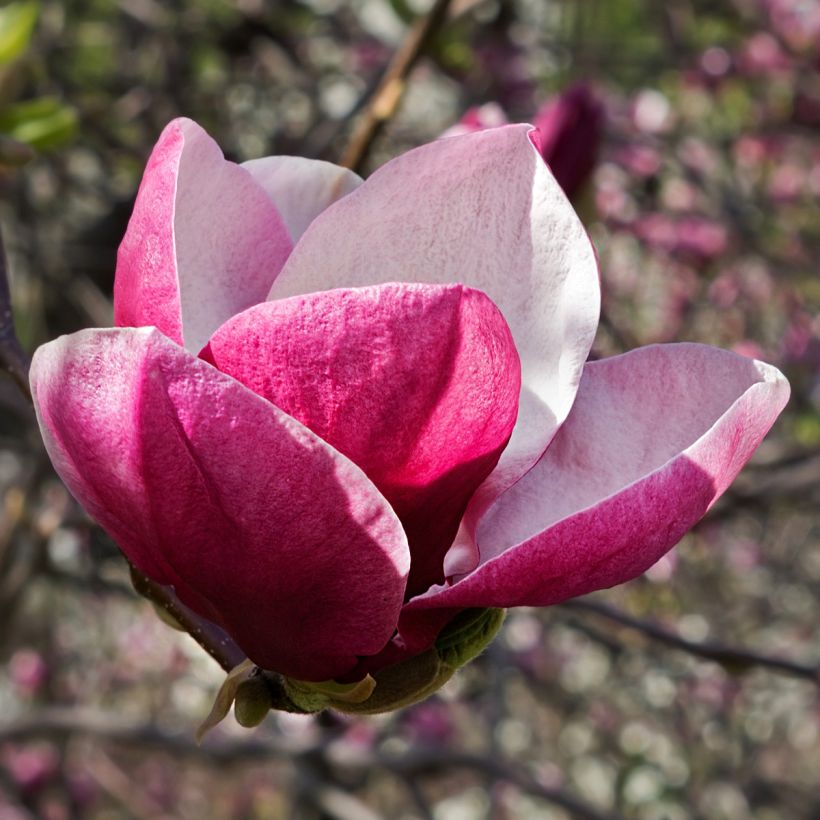

Plant habit
Flowering
Foliage
Botanical data
Magnolia
March Till Frost
Magnoliaceae
Magnolia
Cultivar or hybrid
Other Magnolia
Planting and care
Magnolia 'March Till Frost' prefers sheltered situations, sunny to partially shaded exposures, well-drained, fertile, lime-free, neutral or acidic soil. It dislikes excessively dry or wet soils, windy locations, or root competition, as its root system is shallow. It is hardy (down to -20°C (1°F)), but it is advisable to protect young plants from frost in the first few years after planting. Note that late frosts and cold winds can damage flower buds and young leaves, affecting flowering.
Magnolia can be planted in spring or autumn, outside the frost period, ensuring it is sheltered from cold winds. Prepare a hole 80 cm (32in) in width and depth, and add a good amount of ericaceous compost. Be gentle when placing it in the hole, as the roots are fleshy but quite fragile. Immediate watering, preferably with rainwater, helps settle the soil around the roots.
During the first year after planting, Magnolia requires watering once a week. It will appreciate an annual mulch in spring. It is recommended to mulch around the base to retain moisture during hot seasons, enrich the soil, and protect it from winter cold. As the roots are fragile, transplanting should be avoided.
The only enemies of Magnolia are pests such as scale insects, snails, and slugs that attack young plants, as well as fungal diseases like root rot (in excessively waterlogged soil), coral spot, and Pestalozzia. It is worth noting that magnolias are ornamental trees that tolerate atmospheric pollution well.
Planting period
Intended location
Care
This item has not been reviewed yet - be the first to leave a review about it.
Haven't found what you were looking for?
Hardiness is the lowest winter temperature a plant can endure without suffering serious damage or even dying. However, hardiness is affected by location (a sheltered area, such as a patio), protection (winter cover) and soil type (hardiness is improved by well-drained soil).

Photo Sharing Terms & Conditions
In order to encourage gardeners to interact and share their experiences, Promesse de fleurs offers various media enabling content to be uploaded onto its Site - in particular via the ‘Photo sharing’ module.
The User agrees to refrain from:
- Posting any content that is illegal, prejudicial, insulting, racist, inciteful to hatred, revisionist, contrary to public decency, that infringes on privacy or on the privacy rights of third parties, in particular the publicity rights of persons and goods, intellectual property rights, or the right to privacy.
- Submitting content on behalf of a third party;
- Impersonate the identity of a third party and/or publish any personal information about a third party;
In general, the User undertakes to refrain from any unethical behaviour.
All Content (in particular text, comments, files, images, photos, videos, creative works, etc.), which may be subject to property or intellectual property rights, image or other private rights, shall remain the property of the User, subject to the limited rights granted by the terms of the licence granted by Promesse de fleurs as stated below. Users are at liberty to publish or not to publish such Content on the Site, notably via the ‘Photo Sharing’ facility, and accept that this Content shall be made public and freely accessible, notably on the Internet.
Users further acknowledge, undertake to have ,and guarantee that they hold all necessary rights and permissions to publish such material on the Site, in particular with regard to the legislation in force pertaining to any privacy, property, intellectual property, image, or contractual rights, or rights of any other nature. By publishing such Content on the Site, Users acknowledge accepting full liability as publishers of the Content within the meaning of the law, and grant Promesse de fleurs, free of charge, an inclusive, worldwide licence for the said Content for the entire duration of its publication, including all reproduction, representation, up/downloading, displaying, performing, transmission, and storage rights.
Users also grant permission for their name to be linked to the Content and accept that this link may not always be made available.
By engaging in posting material, Users consent to their Content becoming automatically accessible on the Internet, in particular on other sites and/or blogs and/or web pages of the Promesse de fleurs site, including in particular social pages and the Promesse de fleurs catalogue.
Users may secure the removal of entrusted content free of charge by issuing a simple request via our contact form.
The flowering period indicated on our website applies to countries and regions located in USDA zone 8 (France, the United Kingdom, Ireland, the Netherlands, etc.)
It will vary according to where you live:
- In zones 9 to 10 (Italy, Spain, Greece, etc.), flowering will occur about 2 to 4 weeks earlier.
- In zones 6 to 7 (Germany, Poland, Slovenia, and lower mountainous regions), flowering will be delayed by 2 to 3 weeks.
- In zone 5 (Central Europe, Scandinavia), blooming will be delayed by 3 to 5 weeks.
In temperate climates, pruning of spring-flowering shrubs (forsythia, spireas, etc.) should be done just after flowering.
Pruning of summer-flowering shrubs (Indian Lilac, Perovskia, etc.) can be done in winter or spring.
In cold regions as well as with frost-sensitive plants, avoid pruning too early when severe frosts may still occur.
The planting period indicated on our website applies to countries and regions located in USDA zone 8 (France, United Kingdom, Ireland, Netherlands).
It will vary according to where you live:
- In Mediterranean zones (Marseille, Madrid, Milan, etc.), autumn and winter are the best planting periods.
- In continental zones (Strasbourg, Munich, Vienna, etc.), delay planting by 2 to 3 weeks in spring and bring it forward by 2 to 4 weeks in autumn.
- In mountainous regions (the Alps, Pyrenees, Carpathians, etc.), it is best to plant in late spring (May-June) or late summer (August-September).
The harvesting period indicated on our website applies to countries and regions in USDA zone 8 (France, England, Ireland, the Netherlands).
In colder areas (Scandinavia, Poland, Austria...) fruit and vegetable harvests are likely to be delayed by 3-4 weeks.
In warmer areas (Italy, Spain, Greece, etc.), harvesting will probably take place earlier, depending on weather conditions.
The sowing periods indicated on our website apply to countries and regions within USDA Zone 8 (France, UK, Ireland, Netherlands).
In colder areas (Scandinavia, Poland, Austria...), delay any outdoor sowing by 3-4 weeks, or sow under glass.
In warmer climes (Italy, Spain, Greece, etc.), bring outdoor sowing forward by a few weeks.

































